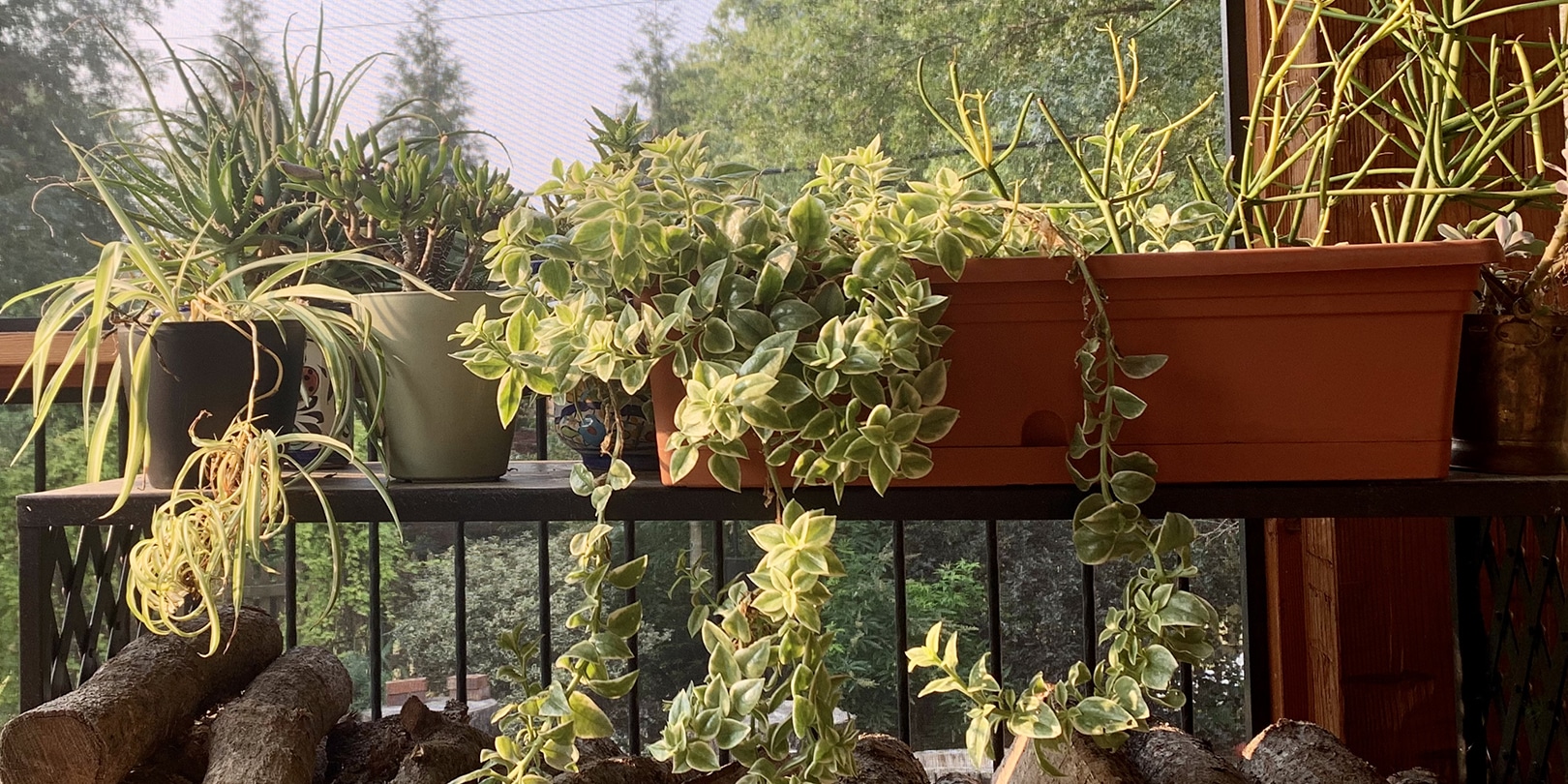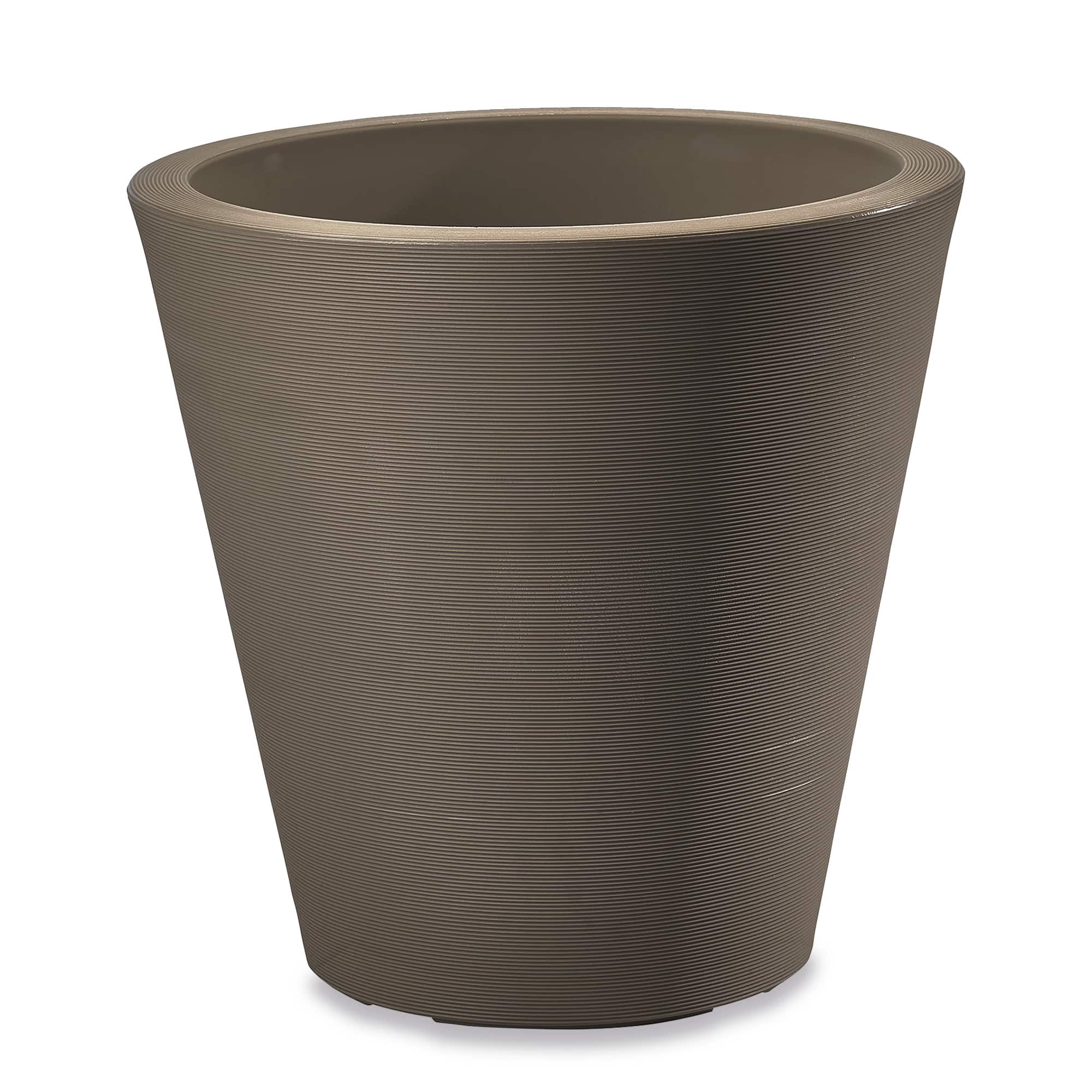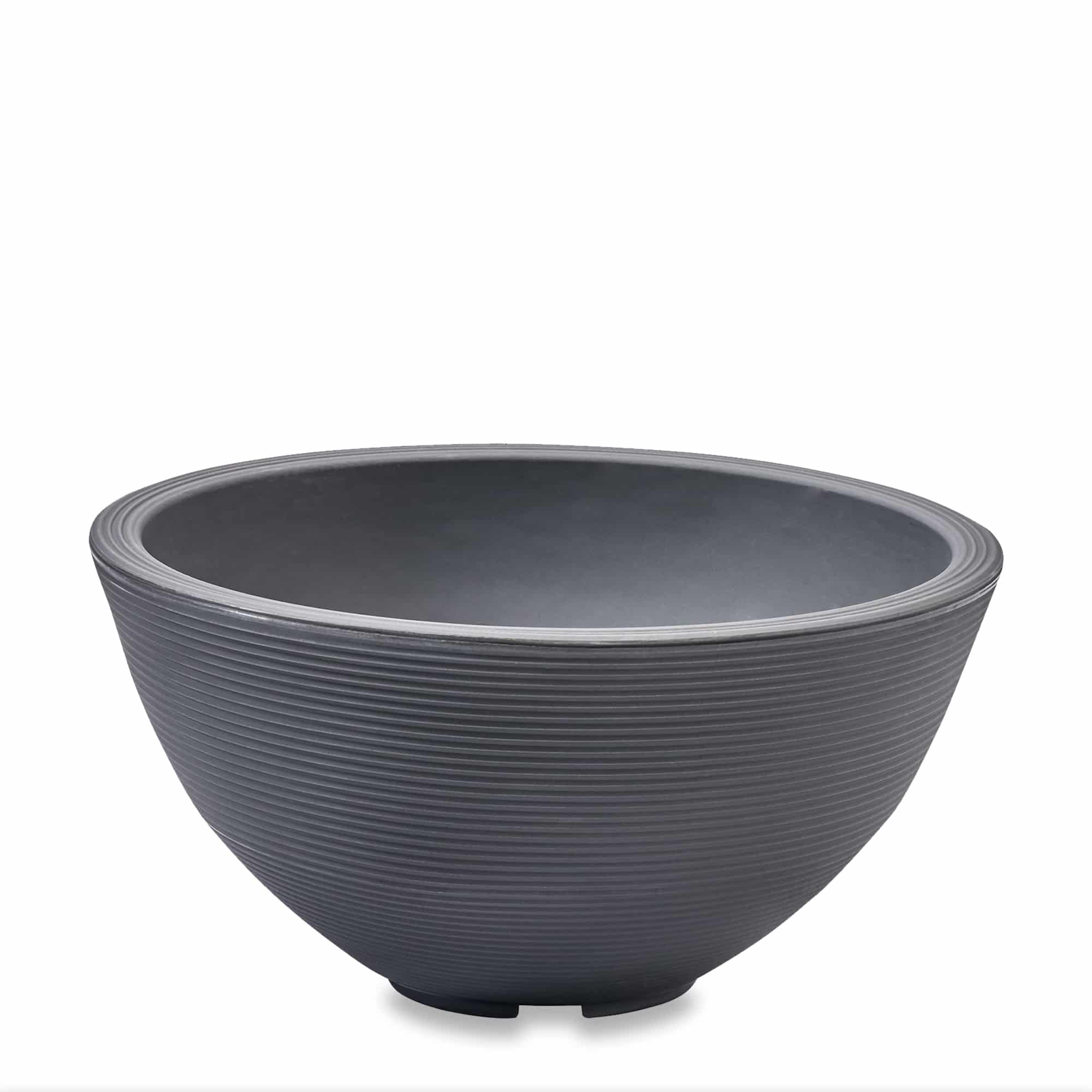You have spent your hard-earned money on soil, plants and fertilizer, and cared for them for months. Don’t give up on them now just because they look tired. Depending on the part of the country you live in, you may have a couple more months before it’s time to empty your pots and store them for the winter or converting them to winter interest. With just an hour or two of work you can have beautiful plants right up until frost. Below are some tips for maintaining and refreshing your summer container garden.
Many gardeners are afraid to cut annuals back. Don’t be! Cutting overgrown or leggy plants back can rejuvenate them. Most plants respond well to being pruned, encouraging them to flush out with fresh growth and flowers. Plants like coleus, petunias, sweet potato vine, verbena, calibrachoa, alternanthera, vinca, lantana, salvia, plectranthus, lobularia, cuphea, dichondra, trailing torenia, impatiens, and begonias, all respond well to pruning. Typically, I cut plants back 1/3 to 1/2 and they bounce back in just a week or two. Do be careful not to cut them so far back that there is not any foliage remaining on the plant. Plants like canna, tropical ginger, and papyrus produce multiple shoots from the ground. Their foliage can become dull and faded looking over time. Follow those stems with dull leaves down to the soil line and cut them off.
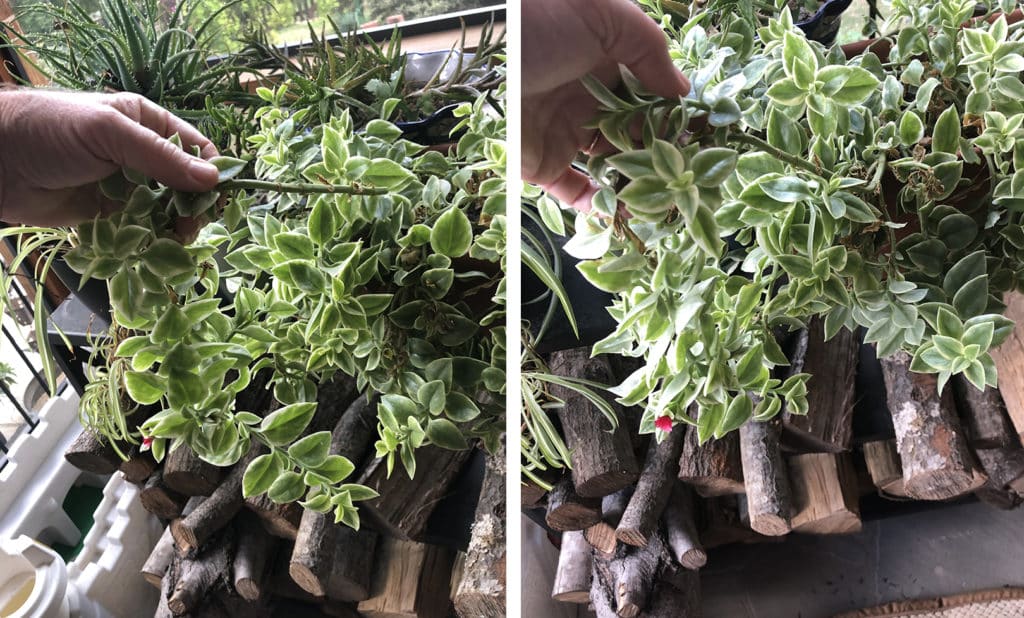
Finding branches with little foliage and cutting it off
Once you have cut back overgrown and leggy plants, you should fertilize to encourage new foliage and flowers in your container gardening efforts. By this time chances are that any slow-release fertilizer you applied when you planted your containers has been used up. If you reapply a slow release this late in the season you may not get your money’s worth, so I recommend applying a water-soluble fertilizer. Follow label directions on the product you choose. In general, apply a water soluble when you trim your plants and again every 12 to 14 days, stopping three to four weeks before your first expected frost.
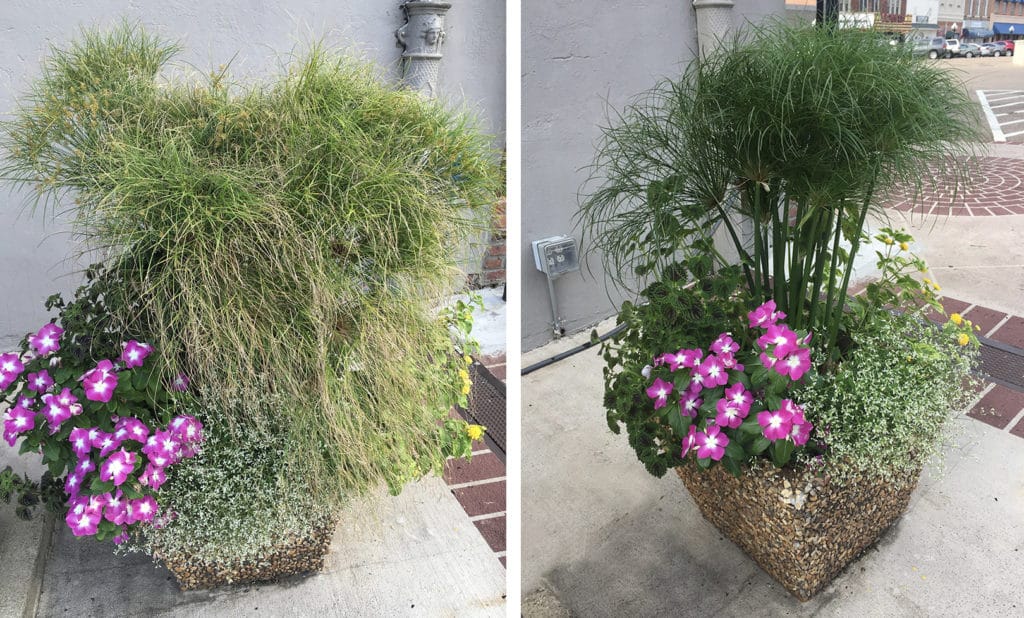
Before cutting back overgrown and leggy plants (left) and a new look with simple deadheading (right)
Cutting back plants can also give you a few weeks reprieve from having to water your container garden so frequently. Typically, after I give plants in my pots a haircut, I am able to water a third to half as frequently for a few weeks, often getting me into cooler weather where they are not drinking as much. But don’t get out of the habit of checking on them! Remember that just like plants in the landscape, actively growing plants in containers need to be thoroughly and deeply watered.
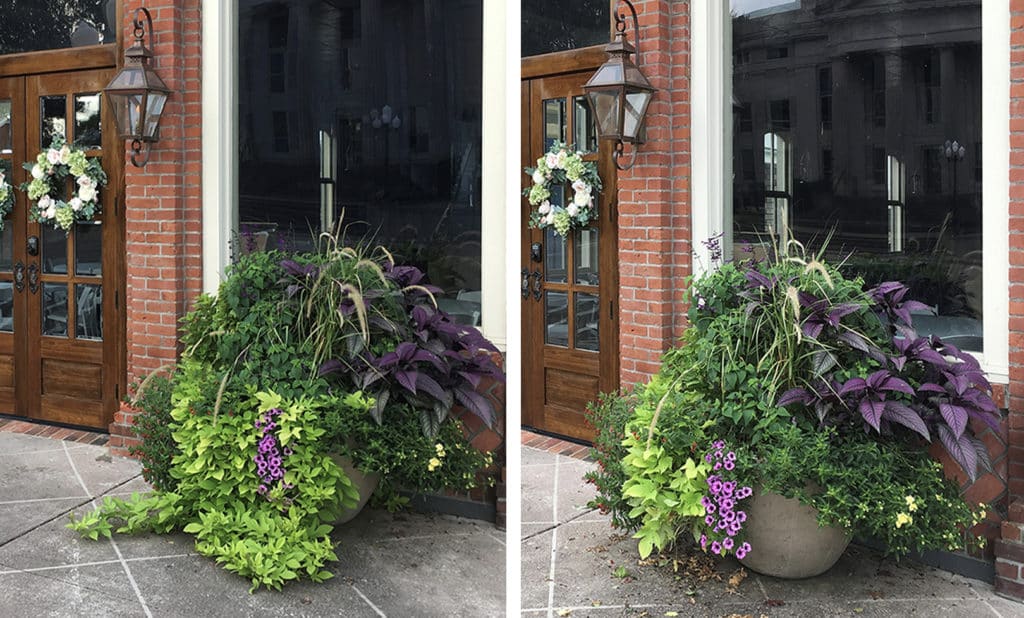
Instantly refreshing the look of your planters with a thorough cutting
If you have plants that have not outgrown their space or don’t lend themselves to being cut back like geraniums or annual gaillardia, they will benefit from having their spent flowers removed. Deadheading on many newer selections of plants like Surfinia®, Supertunia®, Wave®, and Tidal Wave petunias is not necessary, but I still find it rewarding, particularly when the plant is young. Removing the spent flowers from trailing torenia, Heat it Up® gaillardia, geraniums, angelonia, and Suncredible® sunflowers not only helps them to flower more, but also makes them more attractive. Plants like coleus and basil are more likely to send out flower spikes in late summer and will produce more foliage if flower heads are removed.
Deadheading is one container gardening task I find relaxing and rewarding. I compare it to vacuuming the shag carpet in our home when I was growing up. I felt like I had accomplished something because I could instantly see a difference. Using a good pair of bypass pruners or even a sharp pair of scissors makes for a more enjoyable task.
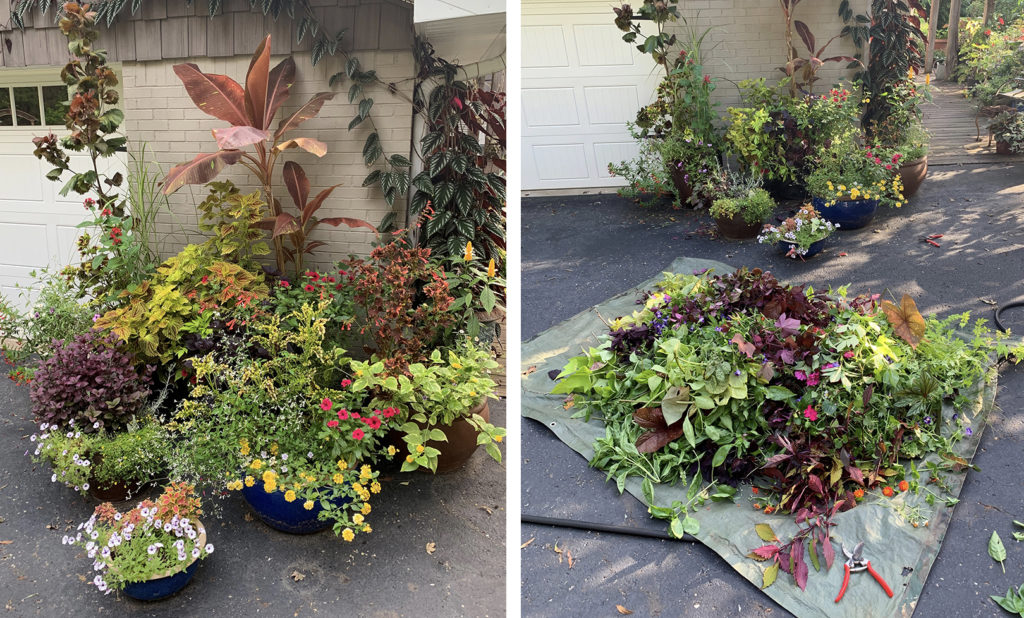
After trimmings from overgrown and leggy plants
If a plant has died and you’re left with a void, or you just are not enjoying a particular plant you have, you may want to replace it. Carefully dig the plant out and replace it with something fun and colorful. Many garden centers and nurseries restock mid and late summer with a smaller but colorful selection of annuals that can be plugged into pots. Look for annuals like ornamental peppers, celosia, coleus, fall blooming asters, mums, and pansies. You may also find cool season ornamentals as well as edible greens such as kale, Swiss chard, cabbage, broccoli, and beet to add to your pots.
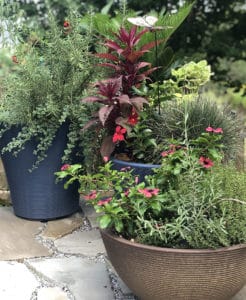
Combining fall herbs and ornamental plants
With these tips I hope you will spend a little time freshening your container garden, which will lead to weeks or months rewarded with beauty.
